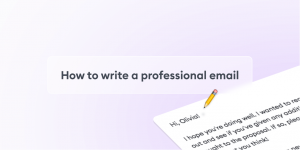What’s the Best Way to End an Email?
the Best Way to End an Email
The way you end an email can make or break how your message is received. The right closing line can leave a positive impression on your recipient, while an inappropriate or too casual email ending may come across as careless or unprofessional.
As such, it’s important to know how to properly end an email so that you can be professional and respectful in all of your business communications. This is particularly true when emailing coworkers, bosses, and clients, as emails to these individuals are often the most formal type of business communication.
There are a few different ways to how to end an email, depending on your relationship and the situation. You can keep it simple and professional by using a sign off such as “Best regards,” or you can use something more casual like “Cheers” or “Take care.” You may also want to consider including your name and job title at the end of your email, although this is only required if you are emailing someone outside of your company or organization.

What’s the Best Way to End an Email?
If you are writing an email to someone you don’t know well, you can try a more casual email closing such as “Love” or “XOXO.” While these can be appropriate for personal emails, it is best to avoid these types of emotional or affectionate email endings in business correspondence.
Likewise, it is not appropriate to use emoticons in professional emails, such as 🙂 or 🙂 in the closing of an email. These types of emoticons are too informal and can be interpreted as unprofessional or rude.
When writing an email to a coworker, you can use a more casual or friendly email closing such as “Cheers,” “Take care,” or “WARMLY.” These are all good alternatives to the traditional “Best regards” or “Best wishes.” This type of casual email signing is appropriate for emails to coworkers that you have established a working relationship with.
You can also use a more formal email closing such as “Best regards” or “Warmly,” which are both good options for professional emails. These are both professional and polite, and they will leave a good impression on your recipient. Using these email closings will show that you are serious about your professional communications and that you respect the person to whom you are communicating.
Ultimately, the key to ending an email effectively is to strike the right balance between professionalism and warmth while ensuring clarity and sincerity in your communication. By choosing an appropriate closing phrase, including a signature block, and maintaining consistency in tone and formatting, you can leave a positive impression on the recipient and ensure that your message is received and understood as intended.